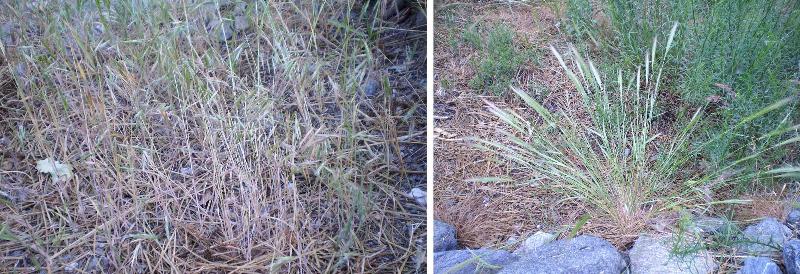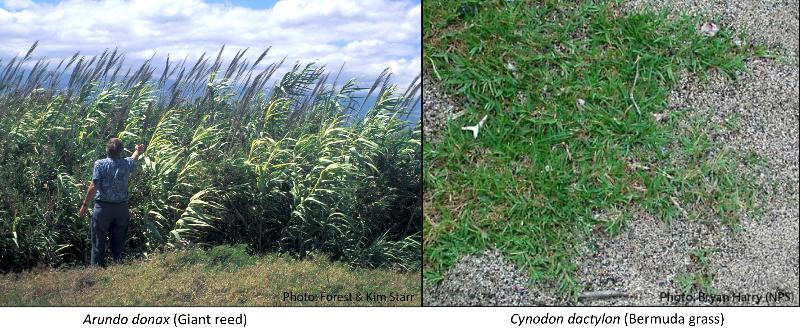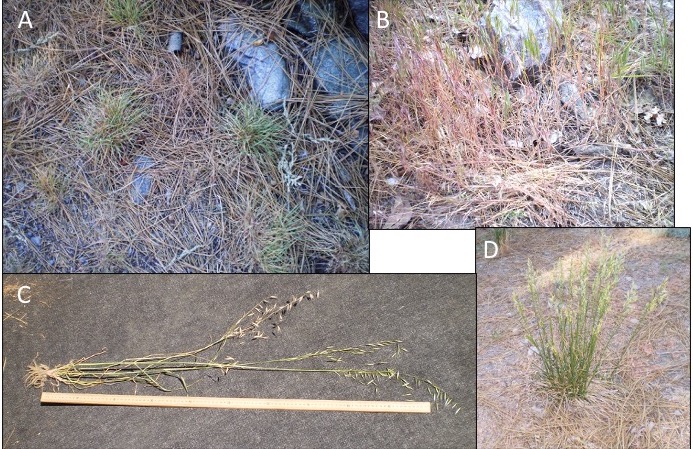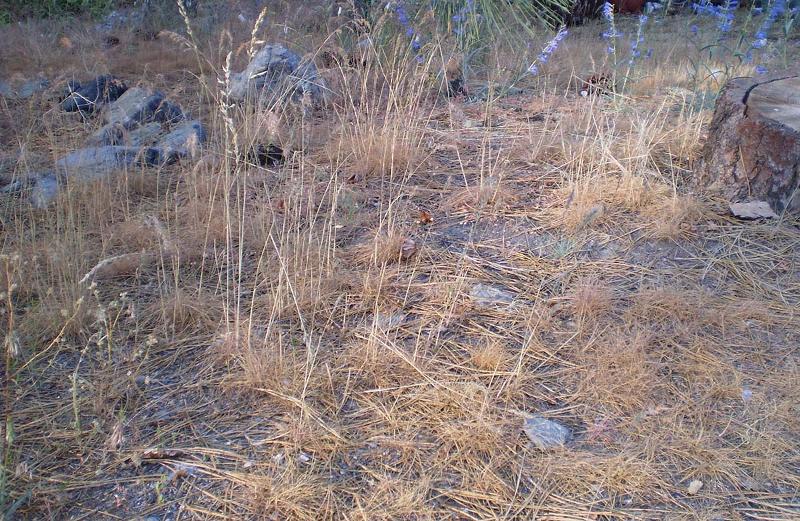Growth form
Grasses can be annuals or perennials. Perenial grasses can be rhizomatous, stoloniferous, or bunch grasses.
Rhizomatous grasses spread by underground horizontal stems (rhizomes).
Stoloniferous grasses spread by aboveground horizontal stems (stolons).
Bunch grasses put up new upright stems next to the old ones year after year, forming a mound or tussock or ...bunch.
In the photo below, the grasses in the left panel are annual grasses. The plant in the right panel is a perennial grass that puts up new leaves and flowering stems from the same root year after year.

Annual grasses may grow large, given the right conditions. (Corn, or Zea mays, is a large annual grass.) Other species may remain relatively short, like the Bromus tectorum (cheatgrass) above.
Perennial grasses may be even taller, or they may be short and prostrate. Bamboo is an example of a large perennial grass. Arundo donax (giant reed) is another example of a large perennial grass. (Arundo donax has become an invasive problem in California, choking waterways.) In contrast, many grass species used for turf are perennial grasses that spread by rhizomes or stolons. Cynodon dactylon (bermuda grass) is one of the latter. It has also become naturalized in California.

Check your understanding:
Below are photos of four grasses:

Look at the brown grasses in the picture below:
